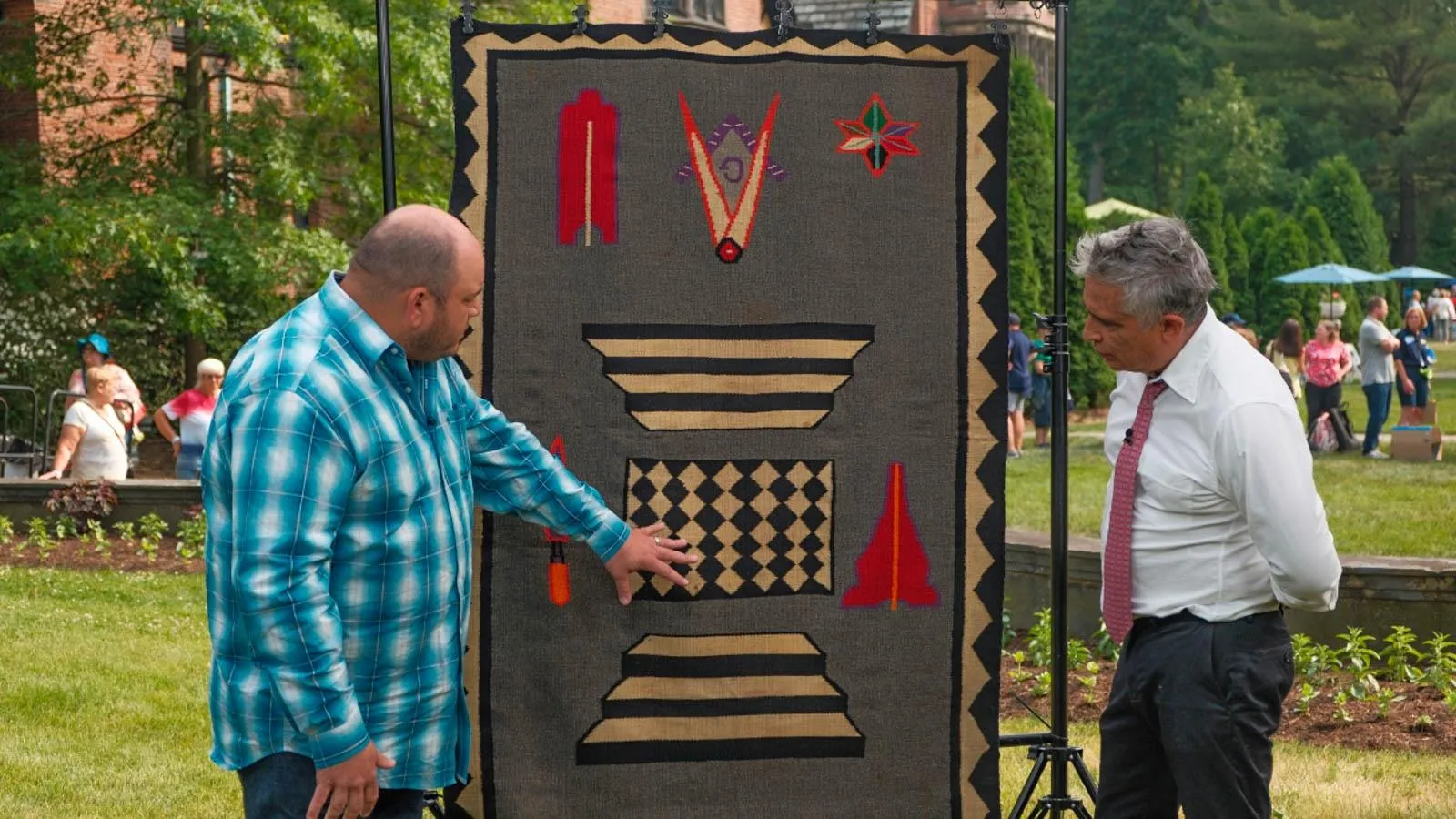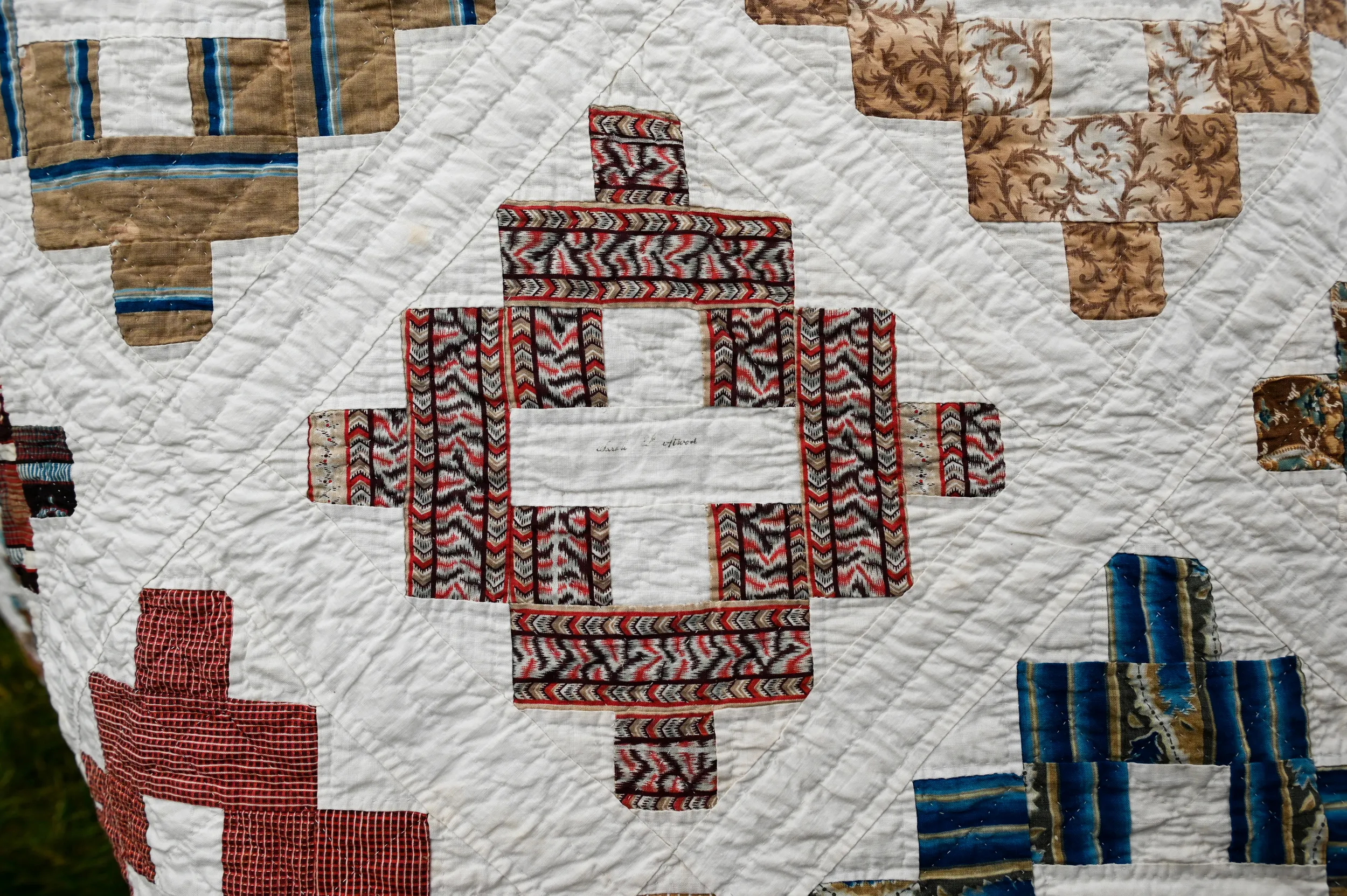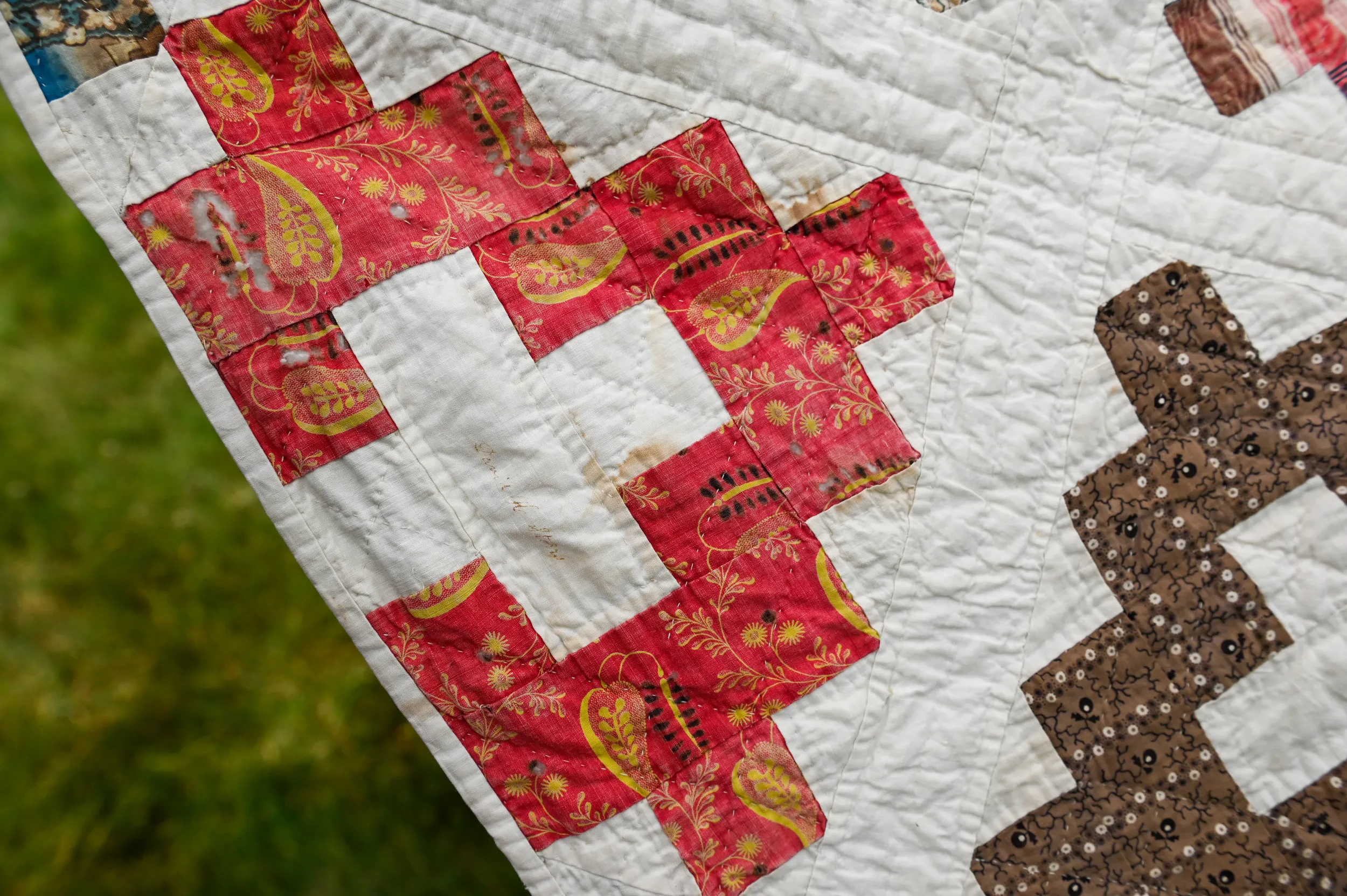GUEST: It's a quilt that's been in my family, handed down from my great-grandparents to my grandfather to my mother. I inherited it in 2003. It's kind of just been wrapped up in a sheet in a cedar chest. (laughs) I do know it's a wedding quilt from 1848, when my great-great-grandfather Isaac Williams Storrs married a Eunice Williams Campbell in Mansfield, Connecticut.
APPRAISER: And Storrs, as a family name, would that be of Storrs, Connecticut?
GUEST: Connecticut, right.
GUEST: The daughter of the people for th, whom this wedding quilt was made married into a Cotton and Mather family. So there are Mather names here and Cotton family names. Sometimes I'm a little embarrassed by the, the Cotton and the Mather names, because they were involved in witch hunting back in Massachusetts. But Cotton Mather I've read up on more recently, and he was very big on advocating for smallpox vaccine, so I think he was a good guy after all. (both laugh)
APPRAISER: This kind of quilt, which is sometimes referred to as a friendship quilt or an album quilt...
GUEST: Mm-hmm.
APPRAISER: ...because of the album blocks, often were created not just on formal occasions, like ceremonies and things, but also when a family or a group of people were moving away. This is a commemorative quilt of the event of Isaac and Eunice's wedding...
GUEST: Mm-hmm.
APPRAISER: ...which is really wonderful. Each block would have been created individually, and then it would be sewn together and backed.
GUEST: Okay.
APPRAISER: And this cross pattern that you see here has a specific name--
chimney sweep pattern. Each block has a name written in ink...
GUEST: Uh-huh.
APPRAISER: ...of someone in the community, in the family. And we know the date, because one of the blocks is...
GUEST: ...blocks is… It's...
APPRAISER: ...in fact, dated. And that also helps to date at least when these
were put together. They are mostly English-printed cottons, and you'll see the really, really small patterns.
GUEST: Hm.
APPRAISER: Almost all of them are pretty diminutive.
GUEST: Mm-hmm.
APPRAISER: And those would have been used for a dress. So when a dress was too worn, or when a garment was too worn, you would cut it up and use those pieces to create quilt blocks.
GUEST: Mm-hmm.
APPRAISER: This is in wonderful condition. It was really loved after this wedding...
GUEST: Mm-hmm.
APPRAISER: ...and really kept beautifully. These span all different sorts of fashionable dress...
GUEST: Mm-hmm.
APPRAISER: ...from about 1820 up to the 1840s. This quilt is a really nice size. It's about eight-and-a-half by seven-and-a-half feet. And what you see is just the variety of cottons that one could buy in America at that time.
GUEST: Mm, mm-hmm.
APPRAISER: Over on your side of the quilt, one of them is possibly the earliest piece. It was a red-brown, and now it's kind of faded to pink.
GUEST: This piece down here?
APPRAISER: And it has wonderful yellow elements to it. And that one is probably about 1820, maybe 1825. The pattern itself and the, and the color, the red, is really indicative of what was being printed in Britain at the time. Turkey red, as they called it.
GUEST: Oh.
APPRAISER: They were trying to emulate reds that came out of Indian production. Do you have any idea of the value?
GUEST: Have no idea. It really more has value to me for the family part of it.
APPRAISER: Well, I'm glad to hear that it will be staying in the family.
GUEST: Definitely.
APPRAISER: It's a wonderful heirloom. It really spans so much of Connecticut history.
GUEST: Right.
APPRAISER: So, amazing interest for colonial America. The market for quilts is not what it used to be.
GUEST: Right. (chuckles)
APPRAISER: It was at its strongest in the '80s, '90s, and a little bit in the early 2000s.
GUEST: Mm-hmm.
APPRAISER: So, in today's market, I would insure this for $3,500.
GUEST: Wow. (chuckling) Okay. (laughing) That's very interesting. I'll pass it on to
my family members. (both chuckling)













